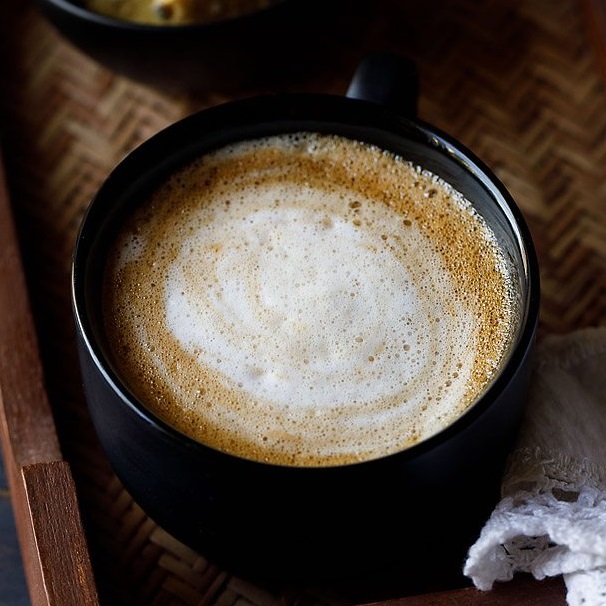Recognizing the Different Kinds Of Crafted Coffee Available: A Comprehensive Guide to Selecting the Right Mixture for Your Palate and Preferences
Navigating the intricate globe of crafted coffee requires an understanding of its diverse elements, from bean ranges to brewing techniques. Each choice influences the final mug, offering a range of flavors that cater to private preferences. Whether you choose the subtle sweet taste of a light roast or the durable notes of a dark brew, the selection process can seem overwhelming. Yet, with a couple of key insights right into the subtleties of coffee attributes, one can reveal a personalized experience that elevates the satisfaction of this beloved drink. What factors will inevitably assist you to your ideal brew?
Review of Crafted Coffee
Crafted coffee represents a thorough approach to developing that raises the drink from mere nourishment to a sensory experience. This method stresses quality at every step of the coffee-making process, starting with the option of premium beans. Artisanal roasters prioritize single-origin coffees and specialty grades, which are commonly sourced from sustainable farms that comply with ethical techniques.
Each aspect of crafted coffee, from toasting to developing, is performed with accuracy and objective. Roasters employ different strategies to improve the beans' fundamental flavors, considering variables such as temperature, air movement, and time. Consequently, the brewing procedure is customized to draw out the best flavor accounts, utilizing techniques that highlight the distinct characteristics of each coffee type.
In addition to focusing on quality, crafted coffee fosters a recognition for the complexities of flavor and aroma. Fanatics typically participate in cupping sessions to discern subtle notes and subtleties, changing coffee sampling right into an art type. This devotion to excellence not only grows a deeper link to the drink yet also promotes a culture of expedition and exploration within the world of coffee. The result is a highly rewarding experience that attract both connoisseurs and laid-back enthusiasts alike.
Popular Developing Techniques
Exploring different brewing methods discloses the diverse techniques that can boost the enjoyment of coffee. crafted coffee. Each technique presents special tastes, aromas, and structures to the last cup, satisfying various choices and tastes buds
Among the most prominent approaches is the pour-over, which allows for specific control over water temperature and flow rate, leading to a clean and delicious mixture. The French press, on the other hand, uses immersion brewing, drawing out rich oils and bits for a fuller body.
Espresso is one more widely favored technique, utilizing high pressure to draw out concentrated coffee, making it the base for numerous specialized drinks like cappuccinos and lattes. Cold mixture has acquired appeal for its smooth, less acidic profile, accomplished by soaking coarsely ground coffee in cool water over an extended period.
The AeroPress offers flexibility and ease of usage, enabling coffee fanatics to experiment with brew times and stress. Finally, the Moka pot produces a solid, abundant coffee reminiscent of espresso, ideal for those that appreciate a bolder flavor.
Coffee Bean Varieties

Arabica beans are known for their smooth and intricate tastes, commonly including wonderful, fruity, and floral notes. They thrive at higher altitudes and are commonly grown in regions with cooler climates. This variety stands for most of worldwide coffee manufacturing and is preferred for its nuanced taste.
On the other hand, Robusta beans are identified by see this site their strong, earthy flavors and greater caffeine material - crafted coffee. They are much easier to cultivate, resistant to pests, and typically grown in reduced altitudes. Robusta is usually made use of in coffee blends to develop a rich crema and a much more durable body
Additionally, there are numerous lesser-known visit the website selections, such as Liberica and Excelsa, which contribute unique tastes and scents to specialty coffees. Understanding these bean selections is vital for picking the appropriate brew, as each kind can dramatically change the coffee experience based on specific choices.
Flavor Profiles Explained
Flavor accounts in coffee are a complex interaction of different elements, consisting of aroma, body, level of acidity, and aftertaste. Each of these factors adds to the general sensory experience, enabling customers to identify and appreciate the subtleties of their brew.
Scent plays a critical role; it sets the stage for the tasting experience, with notes varying from flower and fruity to earthy and nutty. Acidity, frequently called illumination, can boost tastes and provide a revitalizing top quality, while a lack of acidity might yield a smoother, a lot more smooth cup.
The body of coffee describes its weight on the taste, which can range from light and tea-like to complete and syrupy. This element influences how the flavors are perceived, with a heavier body commonly intensifying the richness of the mixture. Aftertaste, or surface, defines the sticking around flavors that stay after swallowing. A tidy finish may leave a pleasurable recurring sweet taste, while a much more intricate aftertaste can reveal hidden notes that establish gradually.
Comprehending these taste profile elements enables coffee enthusiasts to much better appreciate their choices and discover the diverse globe of crafted coffee.
Tips for Choosing Your Mixture
When choosing your mixture, understanding your personal choices and the features of different coffee types is essential. Begin by identifying your flavor profile; do you choose fruity, nutty, or chocolatey notes? Checking out numerous origins can aid you discover distinctive tastes, as beans from areas like Ethiopia frequently show intense, floral notes, while those from Colombia may provide a smoother, balanced taste.
Following, think about the developing method. Each technique, whether it be pour-over, French press, or coffee, affects the last taste and stamina of your coffee. As an example, a French press usually generates a fuller-bodied brew, while pour-over techniques can generate a cleaner, extra nuanced cup.

Last but not least, do not think twice to experiment. Tasting different blends and single-origin coffees can result in wonderful discoveries and a far better understanding of your preferences. Engaging with experienced baristas and participating in coffee samplings can better enhance your trip in picking the perfect mixture customized to your taste.
Verdict
In conclusion, browsing the varied landscape of crafted coffee involves an understanding of numerous developing approaches, bean ranges, and flavor accounts. By checking out the features of Arabica and Robusta, as well as acquainting oneself with various roasting strategies, individuals can enhance their coffee experience.
Ultimately, the developing process is tailored to draw out the best flavor accounts, using approaches that highlight the one-of-a-kind qualities of each coffee type. crafted coffee.
In addition to concentrating on high quality, crafted coffee promotes a gratitude for the intricacies of flavor and aroma.When selecting your mixture, understanding your personal preferences and the characteristics of various coffee types is important. Each method, whether it be pour-over, French press, or coffee, influences the last flavor and toughness of your coffee.In final thought, navigating the diverse landscape of crafted coffee involves an understanding of different brewing methods, bean selections, and flavor accounts.